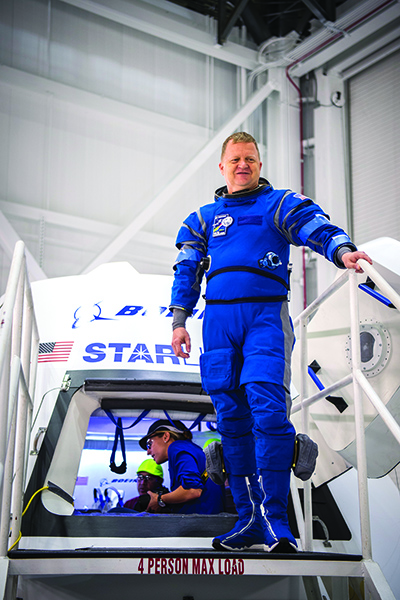Software Models Atmosphere for Spacecraft
NASA Technology
When the Curiosity rover made its spectacular landing on Mars, most of the attention was focused on the revolutionary “sky-crane maneuver” that helped slow the spacecraft down. But behind the scenes, NASA atmospheric modeling software helped with another make-or-break factor: choosing the landing site. This same software is used for commercial spacecraft to ensure they can fly—and land—safely.
The code is part of the Global Reference Atmospheric Model (GRAM) family of software. The first, Earth-GRAM, was originally developed in 1972, with codes developed later for Mars, Venus, Neptune, and Saturn’s moon, Titan.
“Engineers will input a geographic position and time, and they can also change the input parameters to specify atmospheric conditions, such as the atmospheric dust level on Mars,” explains Marshall Space Flight Center’s Hilary Justh, a planetary scientist in the Natural Environments Branch who oversees updates and development for the planetary GRAMs. “GRAM outputs include density, temperature, pressure, winds, and selected atmospheric constituents.
“This assists engineers as they design the spacecraft and choose landing sites,” Justh says.
Other atmospheric models exist and can give more details, but they take longer. The GRAMs are “an easy way to get a snapshot of what’s occurring in the atmosphere,” says Justh.
For Curiosity, the entry, descent, and landing team developed a set of acceptable parameters under which the rover could land safely. The mission’s Council of Atmospheres, of which Justh was a member, then evaluated the candidate landing sites. “Mars-GRAM was utilized as part of the process to determine which sites met the parameters,” Justh explains. Mars-GRAM helped to rule out sites that were unacceptable and allowed the team to focus on the best contenders.
Technology Transfer
As a benefit to the public, NASA offers many of its software packages for free, and the GRAM family is one of them. All the versions are used by researchers, and recently, SpaceX has also become one of the Mars-GRAM users for the Red Dragon spacecraft it plans to send to Mars.
However, the most commonly used version outside NASA is Earth-GRAM, especially among commercial aerospace companies. For example, Boeing, whose aerospace business is based in Berkeley, Missouri, began using the software to work on the Starliner, a commercial crew spacecraft intended to shuttle astronauts to the International Space Station.
The team chose to use the software for the NASA project in part because a database already known and approved by the Agency would help ease approval of the proposal, explains Boeing engineer Thomas Tanita, but now “we use GRAM on many other projects, simply because it’s becoming an industry standard.”
Benefits
“The good thing about GRAM—and the reason why we moved over to it—is that there’s a wealth of statistical data that stands behind GRAM, and it’s also applicable to many locations around the globe,” says Tanita.
Tanita has been working with NASA since the days of the Space Shuttle. Back then, he says, Boeing used detailed models for common landing sites, but they weren’t able to generate profiles just anywhere. “With GRAM, we’re able to go to any location, any time of the year and have relatively solid statistical information as to what kind of atmosphere on that day for that type of entry for that type of trajectory.”
Also, the model can generate thousands of likely potential atmospheres at a given altitude on a given day, he adds. “It allows us to build an operational envelope in which we are confident the vehicle will perform as expected.”
GRAM also helps predict how the winds will impact the spacecraft’s reentry. “On any given day we have to say we can meet our stipulated touchdown footprint, and having knowledge of the winds allows us to tune our guidance and select the proper flight control that will enable us to meet the requirements,” Tanita says.
And because the models are so accurate, Boeing is also using GRAM to simulate the atmospheres for crew members training to fly the Starliner.

Boeing says it uses Earth-GRAM on many projects, including to help design the Starliner, a spacecraft intended to shuttle astronauts to the ISS, and to help train the craft's future crew.













